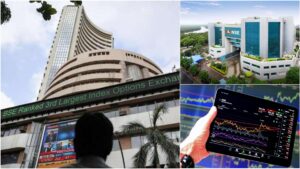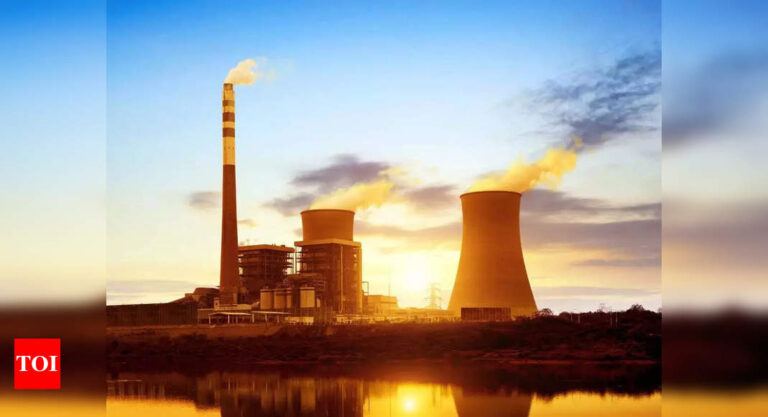[ad_1]
At the moment working as a chemical engineer at Michigan State College, Kaustubh Laturkar is an achieved chemical engineer with an illustrious profession spanning a decade. His academic background features a Grasp’s diploma in chemical engineering from the College of Florida and a Bachelor’s diploma in chemical engineering from Panjab College in India. An exemplary skilled, his experience extends to subjects like nuclear science, oil and gasoline, and environmental sustainability.
The beneath dialog with him focuses on advances in nuclear reactor expertise and its potential impression on India’s future.
Q.Is nuclear energy more likely to play a major position in India’s power combine over the following decade?
Kaustubh (Okay): Between 2019 and 2050, India’s power consumption is predicted to almost double. The sturdy progress will thus result in the nation’s consumption of roughly 14% of worldwide power by 2050. Indian power manufacturing nonetheless largely relies on coal, however the nation is adapting to various power sources, which will even contribute to its power manufacturing sooner or later. . In its place power supply, nuclear power is being developed with a purpose to meet the nation’s power wants. There are at present 22 operational nuclear reactors with 6780 MW of put in capability in India with eight extra reactors (6800 MW) in varied levels of completion. For India’s power wants, nuclear power is perhaps a viable resolution with its low carbon footprint and talent to generate giant quantities of electrical energy with out releasing greenhouse gases. It’ll scale back the nation’s dependence on fossil fuels whereas helping it in changing into power impartial. India has a really promising future on the subject of nuclear energy.
Q. What technological developments do you foresee within the design and operation of nuclear reactors that could possibly be helpful significantly at a a lot smaller scale?
Okay: It’s true that a number of nuclear reactors are at present beneath growth in India, however all of them are large-scale reactors. Nonetheless, there are locations the place energy is required, however it would take a substantial period of time to get approval, set up, and function the vegetation to generate energy. Small modular reactors (SMRs) and really small modular reactors (vSMRs) are novel reactor designs that function on a smaller scale and serve a distinct segment marketplace for nuclear power manufacturing. The reactors are designed utilizing modular expertise leading to economies of scale and shorter building durations. Regardless of being underexplored in India, these applied sciences are being evaluated by corporations around the globe as progressive options for addressing energy necessities which may result in a revolution in energy technology on a modest scale.
Q. May you elaborate on the brand new sorts of reactors and their benefits over typical nuclear reactors?
Okay: SMRs and vSMRs can tackle quite a few points related to typical nuclear reactors. SMRs are reactors that generate 300 MW(e) or much less, whereas vSMRs are designed to supply electrical energy sometimes as much as 20 MW(e). The aim of each courses of reactors is so as to add incremental capability to satisfy power demand. The size of those reactors allow modularisation in addition to environment friendly meeting in manufacturing services. In comparison with typical nuclear reactors, these reactors require a lot much less upfront funding and building, making them an more and more fashionable various. Along with offering carbon-free power, in addition they tackle security issues with superior protecting mechanisms. Along with producing energy, these reactors can generate warmth that can be utilized in different energy-intensive purposes, comparable to centralized group heating or purification of ocean water. This expertise has additionally attracted vital funding from governments and personal gamers around the globe, resulting in progressive designs on the forefront of expertise.
Q. What are the potential challenges within the institution of those nuclear energy reactor packages in India?
Okay: It’s nonetheless early days for SMR and vSMR expertise, and most designs haven’t but been examined or authorised. It’ll take time for these reactors to be integrated into India’s nuclear power manufacturing. Regulatory compliance and implementation schedules are the primary issues. Despite being based mostly on many years of conventional nuclear reactor analysis and growth, this expertise presents a singular set of challenges. These reactors would require vital upfront design bills, so authorities funding is important. Regardless that these reactors are inexpensive to construct than typical nuclear reactors, electrical energy technology prices stay excessive in comparison with conventional or renewable power sources. To develop licensing and regulation protocols, vital analysis will should be performed into their design security parameters. Whereas their integration with the present infrastructure will take a while, India should reap the benefits of the chance to deal with elements which have contributed to its lag in nuclear power progress by exploring these novel ideas.
Q. What are your ideas about India’s nuclear future by way of these novel reactor applied sciences for fostering sustainable and safe nuclear power?
Okay: It’s evident that these small nuclear reactors are nonetheless within the early levels of growth. The identical scrutiny will probably be utilized to them as to traditional reactors regardless of their smaller measurement. However these reactors are inherently steady in design, and are geared up with quite a lot of refined engineering and security options. It’s potential to function these along side different superior applied sciences to supply sustainable, low-carbon power sources sooner or later. In an effort to scale back carbon emissions and capitalize on world SMR provide cooperation, the Indian authorities has sought to encourage these novel reactor applied sciences. Even on the lately concluded G20 summit in September 2023, India and america collaborated on many power and sustainable initiatives, together with the additional growth of SMR expertise. For the Indian subcontinent to satisfy its power wants extra effectively, the federal government should make investments sources and concentrate on the development of this expertise. Hopefully, sooner or later, authorities amendments will permit for some flexibility for personal funding, worldwide commerce, and new enterprise growth. A wise nuclear coverage can allow India to succeed in internet zero power ranges by 2070 and obtain a carbon-neutral future with the precise help and help.
Disclaimer: The views and opinions expressed within the story are impartial skilled judgments of the specialists, and TIL doesn’t take any accountability for the accuracy of their views. The above content material is non-editorial, and TIL hereby disclaims any and all warranties, expressed or implied, referring to it, and doesn’t assure, vouch for or essentially endorse any of the content material.
The beneath dialog with him focuses on advances in nuclear reactor expertise and its potential impression on India’s future.
Q.Is nuclear energy more likely to play a major position in India’s power combine over the following decade?
Kaustubh (Okay): Between 2019 and 2050, India’s power consumption is predicted to almost double. The sturdy progress will thus result in the nation’s consumption of roughly 14% of worldwide power by 2050. Indian power manufacturing nonetheless largely relies on coal, however the nation is adapting to various power sources, which will even contribute to its power manufacturing sooner or later. . In its place power supply, nuclear power is being developed with a purpose to meet the nation’s power wants. There are at present 22 operational nuclear reactors with 6780 MW of put in capability in India with eight extra reactors (6800 MW) in varied levels of completion. For India’s power wants, nuclear power is perhaps a viable resolution with its low carbon footprint and talent to generate giant quantities of electrical energy with out releasing greenhouse gases. It’ll scale back the nation’s dependence on fossil fuels whereas helping it in changing into power impartial. India has a really promising future on the subject of nuclear energy.
Q. What technological developments do you foresee within the design and operation of nuclear reactors that could possibly be helpful significantly at a a lot smaller scale?
Okay: It’s true that a number of nuclear reactors are at present beneath growth in India, however all of them are large-scale reactors. Nonetheless, there are locations the place energy is required, however it would take a substantial period of time to get approval, set up, and function the vegetation to generate energy. Small modular reactors (SMRs) and really small modular reactors (vSMRs) are novel reactor designs that function on a smaller scale and serve a distinct segment marketplace for nuclear power manufacturing. The reactors are designed utilizing modular expertise leading to economies of scale and shorter building durations. Regardless of being underexplored in India, these applied sciences are being evaluated by corporations around the globe as progressive options for addressing energy necessities which may result in a revolution in energy technology on a modest scale.
Q. May you elaborate on the brand new sorts of reactors and their benefits over typical nuclear reactors?
Okay: SMRs and vSMRs can tackle quite a few points related to typical nuclear reactors. SMRs are reactors that generate 300 MW(e) or much less, whereas vSMRs are designed to supply electrical energy sometimes as much as 20 MW(e). The aim of each courses of reactors is so as to add incremental capability to satisfy power demand. The size of those reactors allow modularisation in addition to environment friendly meeting in manufacturing services. In comparison with typical nuclear reactors, these reactors require a lot much less upfront funding and building, making them an more and more fashionable various. Along with offering carbon-free power, in addition they tackle security issues with superior protecting mechanisms. Along with producing energy, these reactors can generate warmth that can be utilized in different energy-intensive purposes, comparable to centralized group heating or purification of ocean water. This expertise has additionally attracted vital funding from governments and personal gamers around the globe, resulting in progressive designs on the forefront of expertise.
Q. What are the potential challenges within the institution of those nuclear energy reactor packages in India?
Okay: It’s nonetheless early days for SMR and vSMR expertise, and most designs haven’t but been examined or authorised. It’ll take time for these reactors to be integrated into India’s nuclear power manufacturing. Regulatory compliance and implementation schedules are the primary issues. Despite being based mostly on many years of conventional nuclear reactor analysis and growth, this expertise presents a singular set of challenges. These reactors would require vital upfront design bills, so authorities funding is important. Regardless that these reactors are inexpensive to construct than typical nuclear reactors, electrical energy technology prices stay excessive in comparison with conventional or renewable power sources. To develop licensing and regulation protocols, vital analysis will should be performed into their design security parameters. Whereas their integration with the present infrastructure will take a while, India should reap the benefits of the chance to deal with elements which have contributed to its lag in nuclear power progress by exploring these novel ideas.
Q. What are your ideas about India’s nuclear future by way of these novel reactor applied sciences for fostering sustainable and safe nuclear power?
Okay: It’s evident that these small nuclear reactors are nonetheless within the early levels of growth. The identical scrutiny will probably be utilized to them as to traditional reactors regardless of their smaller measurement. However these reactors are inherently steady in design, and are geared up with quite a lot of refined engineering and security options. It’s potential to function these along side different superior applied sciences to supply sustainable, low-carbon power sources sooner or later. In an effort to scale back carbon emissions and capitalize on world SMR provide cooperation, the Indian authorities has sought to encourage these novel reactor applied sciences. Even on the lately concluded G20 summit in September 2023, India and america collaborated on many power and sustainable initiatives, together with the additional growth of SMR expertise. For the Indian subcontinent to satisfy its power wants extra effectively, the federal government should make investments sources and concentrate on the development of this expertise. Hopefully, sooner or later, authorities amendments will permit for some flexibility for personal funding, worldwide commerce, and new enterprise growth. A wise nuclear coverage can allow India to succeed in internet zero power ranges by 2070 and obtain a carbon-neutral future with the precise help and help.
Disclaimer: The views and opinions expressed within the story are impartial skilled judgments of the specialists, and TIL doesn’t take any accountability for the accuracy of their views. The above content material is non-editorial, and TIL hereby disclaims any and all warranties, expressed or implied, referring to it, and doesn’t assure, vouch for or essentially endorse any of the content material.
[ad_2]
2024-03-29 06:38:03
[





















+ There are no comments
Add yours